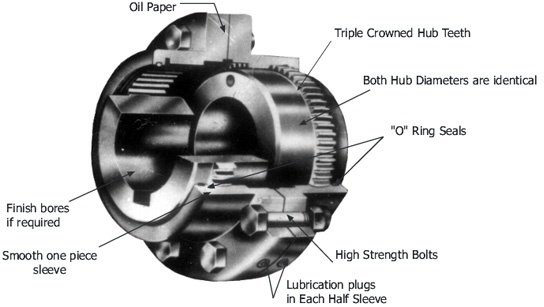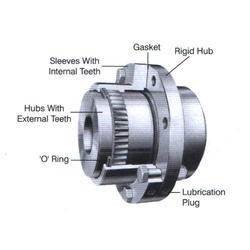We are excited to share with you our comprehensive guide on the difference between full gear coupling and half gear coupling. Whether you are new to the field or a seasoned engineer, this guide will help you understand the key differences between these two types of couplings.
What is a Gear Coupling?
A gear coupling is a mechanical device used to transmit torque between two shafts that are not collinear. They are commonly used in heavy-duty applications that require reliable and efficient torque transmission. Gear couplings are designed to compensate for angular, parallel, and axial misalignment between the shafts.
Full Gear Coupling
A full gear coupling, as the name suggests, consists of two complete gears with tooth flanks that are either straight or helical. The gears are mounted on each shaft and are in contact with each other. The teeth on the gears mesh with each other, transmitting torque from one shaft to the other. The full gear coupling is known for its high torque capacity, efficiency, and reliability. It can accommodate misalignment up to 1.5 degrees and is often used in high-speed and heavy-duty applications.

A half gear coupling, also known as a flexible coupling, consists of one complete gear on one shaft and a half gear on the other shaft. The half gear has teeth that mesh with the teeth on the complete gear. The half gear is mounted on a flexible element, such as a rubber or metal bushing, that compensates for misalignment. Half gear couplings are designed to accommodate misalignment up to 3 degrees and are commonly used in low-speed and medium-duty applications.

The Difference between Full Gear Coupling and Half Gear Coupling
The main difference between full gear coupling and half gear coupling lies in their design and torque capacity. Full gear couplings have two complete gears that provide high torque capacity, efficiency, and reliability. They are used in high-speed and heavy-duty applications. Half gear couplings, on the other hand, have one complete gear and one half gear mounted on a flexible element. They provide moderate torque capacity and are used in low-speed and medium-duty applications.
Another significant difference is their ability to accommodate misalignment. Full gear couplings can accommodate misalignment up to 1.5 degrees, while half gear couplings can accommodate misalignment up to 3 degrees. Half gear couplings are more flexible and can compensate for more significant misalignments, making them ideal for applications that require flexibility.
Conclusion
In summary, the difference between full gear coupling and half gear coupling lies in their design, torque capacity, and ability to accommodate misalignment. Full gear couplings are designed for high-speed and heavy-duty applications, while half gear couplings are suitable for low-speed and medium-duty applications. Both types of couplings have their advantages and disadvantages, and the choice between them depends on the specific application requirements.
We hope this guide has provided you with valuable insights into the difference between full gear coupling and half gear coupling. If you have any questions or need further assistance, please do not hesitate to contact us.